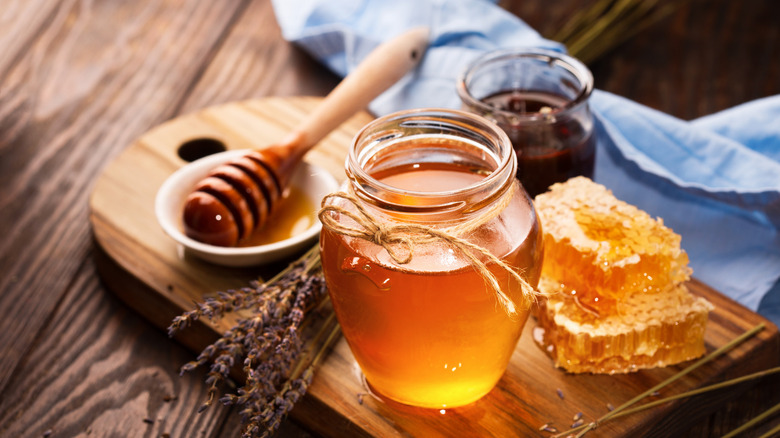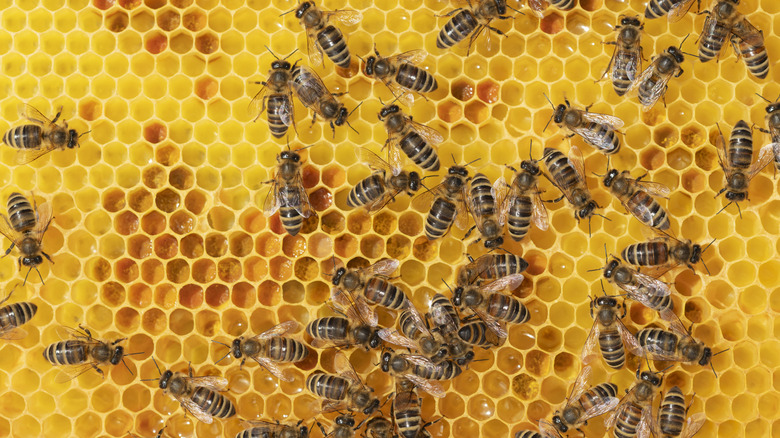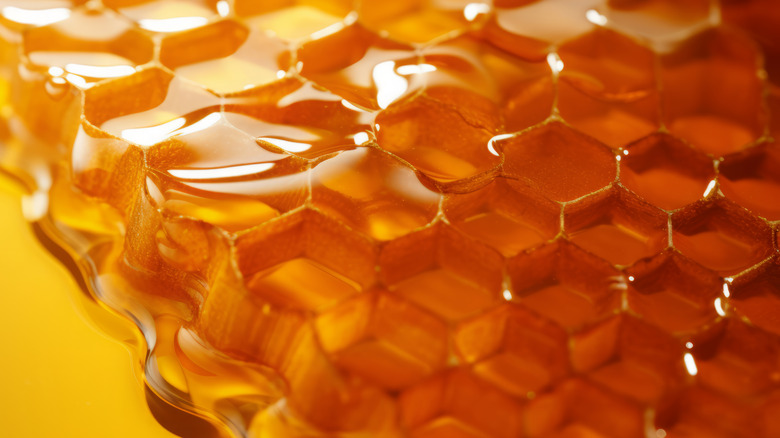The Scientific Reason Honey Never Expires
Humans have been raiding beehives to get their hands on that golden, sticky treasure we call honey for millennia, with the earliest recorded use of honey dating back well over 10,000 years. It was a big part of civilization, used in everything from ancient medicines to a natural sweetener in the days before sugar. Even today, archaeologists are still digging up ancient pots filled with honey all around the world. But here's the cool part: In many cases, it was found that the honey inside of these thousand-year-old pots was still edible! In 2015, scientists found a 3,000-year-old pot of perfectly preserved honey in Egypt. How's that for a long shelf life?
Honey is made almost entirely of sugar with very little water, and it's quite acidic too. This unique combination creates an environment where bacteria — the usual culprits behind food spoilage — rarely survive. That said, similar foods like molasses are low in moisture and are acidic, too — and while these other foods do have long shelf lives, they have an expiration date, unlike honey.
What's the difference? Well, molasses doesn't have bees tending to it! Because honey is the literal lifeblood of a colony, the bees have done some bio and chemical engineering to make sure it can stay fresh for as long as possible.
How bees help honey's shelf life
The honey-making process starts with foraging bees buzzing from flower to flower to gather up sweet nectar. As the nectar sits in the bee's stomach, the raw nectar is "washed" with enzymes to break it down from complex chains of sugars into simpler sugars that the bees can comfortably digest.
Once they get back to the hive, the older bees pass this partially processed nectar to younger "house bees," who drink up the broken-down nectars and treat it with even more enzymes to further refine the honey. The list of component enzymes in this chemical cocktail is very long, but the one you should pay attention to is glucose oxidase. Its job is to break down a small portion of the nectar into gluconic acid (which helps lower the pH level of the honey so that it stays acidic) and hydrogen peroxide. (With its concentration of hydrogen peroxide, honey was widely used historically for treating for skin conditions, dressing burns, and preventing infections.)
The bees keep processing the nectar until it reaches just the right consistency, with less than 20% water content. Then, the next step in the spoil-proofing process begins: Drying.
Honey doesn't have much water content
Water is the key ingredient to life, and that also applies to bacteria. To make honey extra long-lasting, bees have to take an extra step and dry it. After the house bees finish their enzyme treatment, they store the honey in hexagonal cells within honeycombs. Even though the water content of this proto-honey is about 20%, they need it to be even less moist and more concentrated. So, bees will gather around the freshly-filled honeycombs and flap their wings. The flapping motion turns each bee into a mini dryer fan. When they start their process, the nectar is about 80% water, but by the time they're fully done, honey contains just 15% to 18%. The honey is now ready for (indefinite) storage.
But while the bees are naturally adept at preserving their honey, we humans can slip up. When you get that new jar of Manuka honey from Costco, keep in mind that because it's so dehydrated, the honey can readily absorb moisture. This is why you need to keep your honey in an airtight container. If it's open to the humid air, water will rehydrate the honey. When water content in honey exceeds 25%, bacteria can move in again. The honey crystallizes over time when you keep it in the jar, but that's normal and can be easily fixed (there are plenty of ways to use crystallized honey in the kitchen, too.) As long as the honey is allowed to stay just the way that the bees made it, it can last for centuries.


